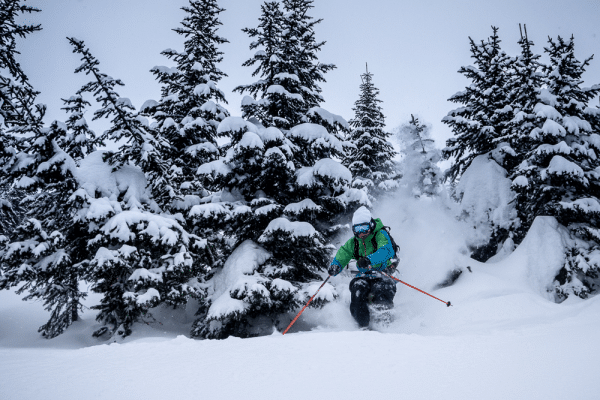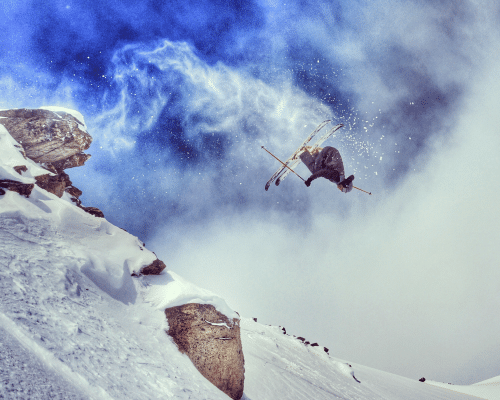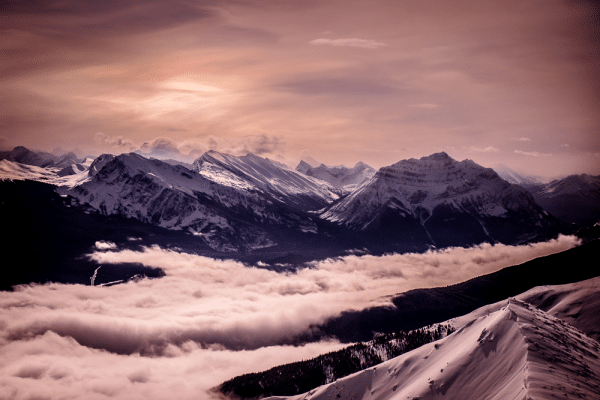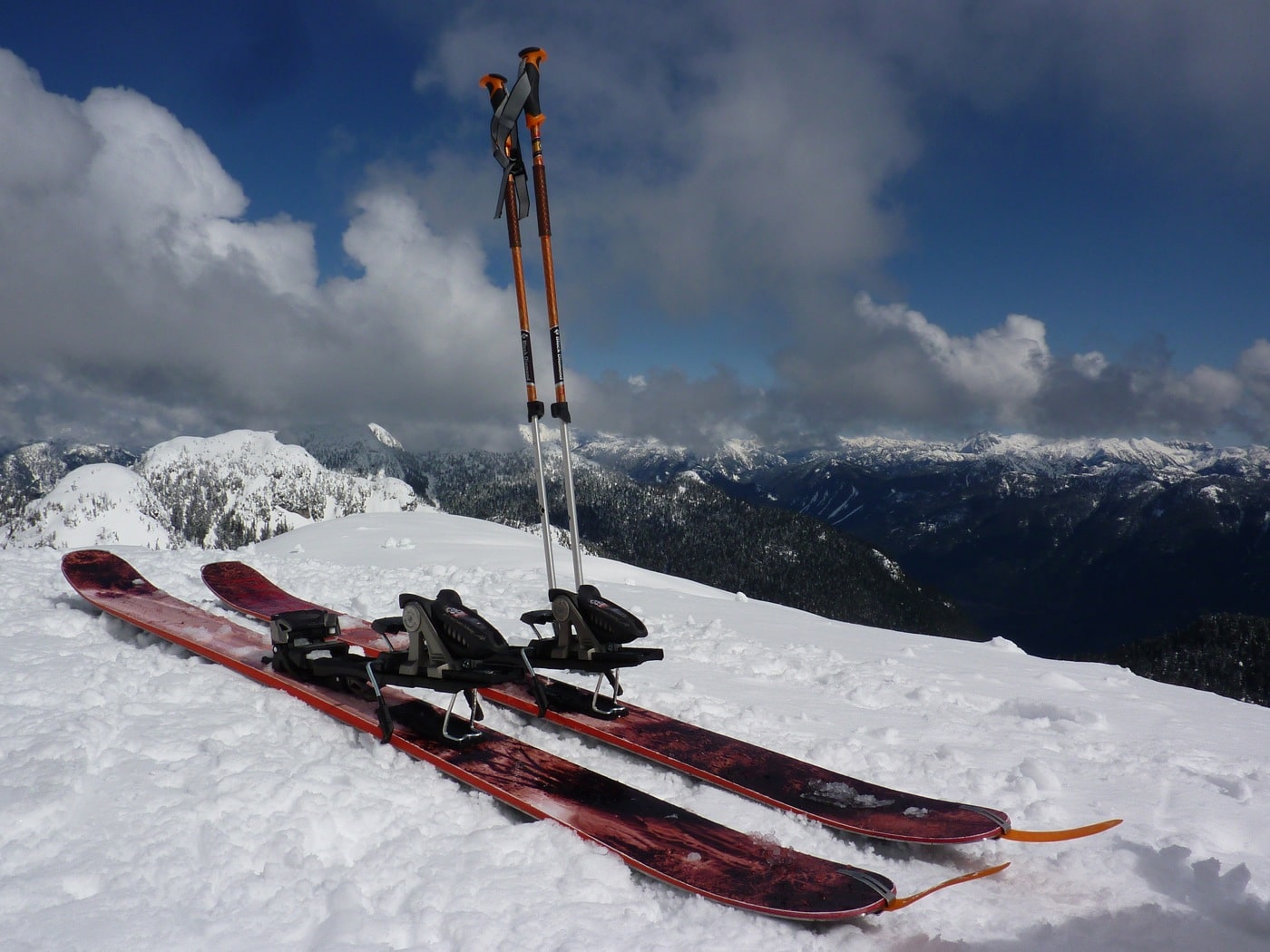Another ski season has come and gone. Apart from western Canada’s Whistler Blackcomb, which stays open until May 26, most ski resorts are shutting down their lifts. And most ski shops are rolling out their summer inventory of mountain bikes and skateboards. It’s the perfect time to buy ski gear.
Discounts abound in spring, as shops must liquidate last season’s gear. Gear at half price is tempting but that doesn’t mean it’s a good idea to spend recklessly. Here’s how I would approach spring ski gear shopping:
Buy the Right Boots

Cold, uncomfortable feet will ruin a ski trip fast, so I consider boots the most essential part of your gear. Don’t buy ski boots online, as every pair has a different fit and ordering a pair without trying them on can be disaster. I’d recommend finding a professional boot fitter who can guide you to the right pair based on your performance needs and foot shape; if that’s not possible, here are a few guidelines to help you choose the right ones.
Mondo Sizing: Ski boots are measured in Mondo Sizing, which essentially equates to the length of the boot in centimeters. Size 28 is equivalent to a men’s size 10 shoe in the U.S. The proper length of a ski boot is critical to both comfort and warmth. With the boot fully buckled, your big toe should feel a slight pressure against the front of the boot.
Last: Aside from the boot length, all ski boots also come with a last width measurement taken across the forefoot. Measured in millimeters, these range from a narrow 97 mm to a wide 105 mm.
Flex: Flex refers to how difficult it is to flex the ski boot forward. The scale ranges from 50-60 flex, which is quite soft and ideal for beginners, to 130 flex race boots, worn by the likes of U.S. skier Bode Miller at the Sochi 2014 Olympics. Most skiers will find their sweet spot between 80 -100.
Keep Renting Skis

When I first introduced this column, I admitted to having a garage full of skis. I own powder skis, park skis, race skis, and backcountry skis. At an average cost of $750, skis are a hefty investment. In my case, it’s usually a good one because I ski more than 100 days a year.
For skiers who average less than 15 days a season, I recommend renting. In the long run, it saves a lot of money, especially if you’re navigating between airports on your way to the slopes. Most airlines will hit you up for at least a $25-$50 baggage fee. Renting makes it possible to not only try the latest equipment, but also to match skis to the snow conditions. Here’s a rundown of the various types:
Powder Skis: Ideal for days with plenty of fresh snow, powder skis are fatter and longer than the average ski. The waist – measured in the middle of the ski – is typically over 100 mm to help the ski float above the fresh snow.
Park Skis: Now that slopestyle and superpipe skiing is included in the Olympics, most ski resorts are building better terrain parks with big air jumps, rail slides, and halfpipes. Park skis are generally symmetrical and twin tip, meaning they’ll ski equally well forwards or switch (backwards). If this all sounds foreign, check out footage from Sochi or the latest x-games.
Carving Skis: The broadest category of skis, carving skis have aggressive hourglass-shaped side cuts that helps them initiate turns. These skis vary widely in turning radius, but a ski with a turning radius between 17-23 meters suits most skiers who spend the majority of their day on groomed slopes.
Race Skis: Essentially just a performance level carving ski, race skis are built specifically for each Olympic discipline. Slalom skis have a short turning radius to facilitate quick turns. Super-G and downhill skis are built for nothing but speed, and Giant Slalom skis fall somewhere in between.
Update Your Apparel
Even with the latest and greatest ski gear, hitting the slopes in the same ski jacket and pants bought a decade ago is a surefire way to be labeled a gaper.

The term gaper refers to clueless skiers who commit one of three major fashion faux pas:
- Ski pants tucked into their ski boots, rather than pulled over the cuff of the boot.
- Large gap between their goggles and hat, exposing their forehead.
- Outdated jackets, most often in bright colors, reminiscent of the 1990’s.
Modern ski apparel is all about bold, not bright, colors. Think red, blue and green. Ideally, ski pants will match the jacket’s colors; however, if it isn’t possible then plain black ski pants are acceptable.
Helmets are considered essential now, too, but must be worn with goggles. To keep in fashion, sunglasses must be worn with hats and, even then, only during spring.
[alert type=white]
Boot fitters: www.surefoot.com
Skis and apparel: www.evo.com and www.backcountry.com
[/alert]

